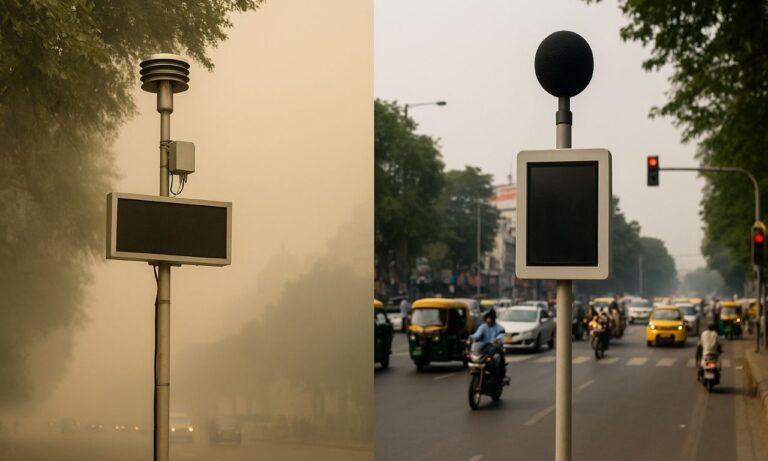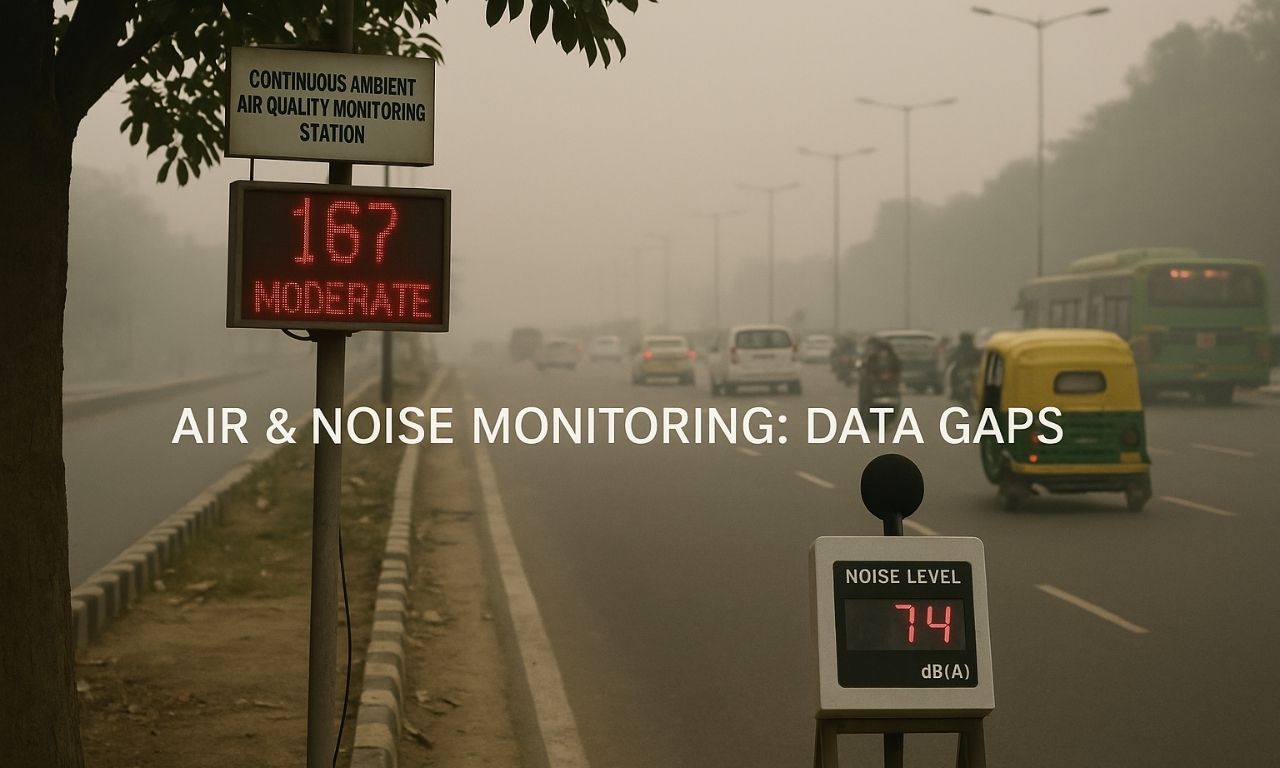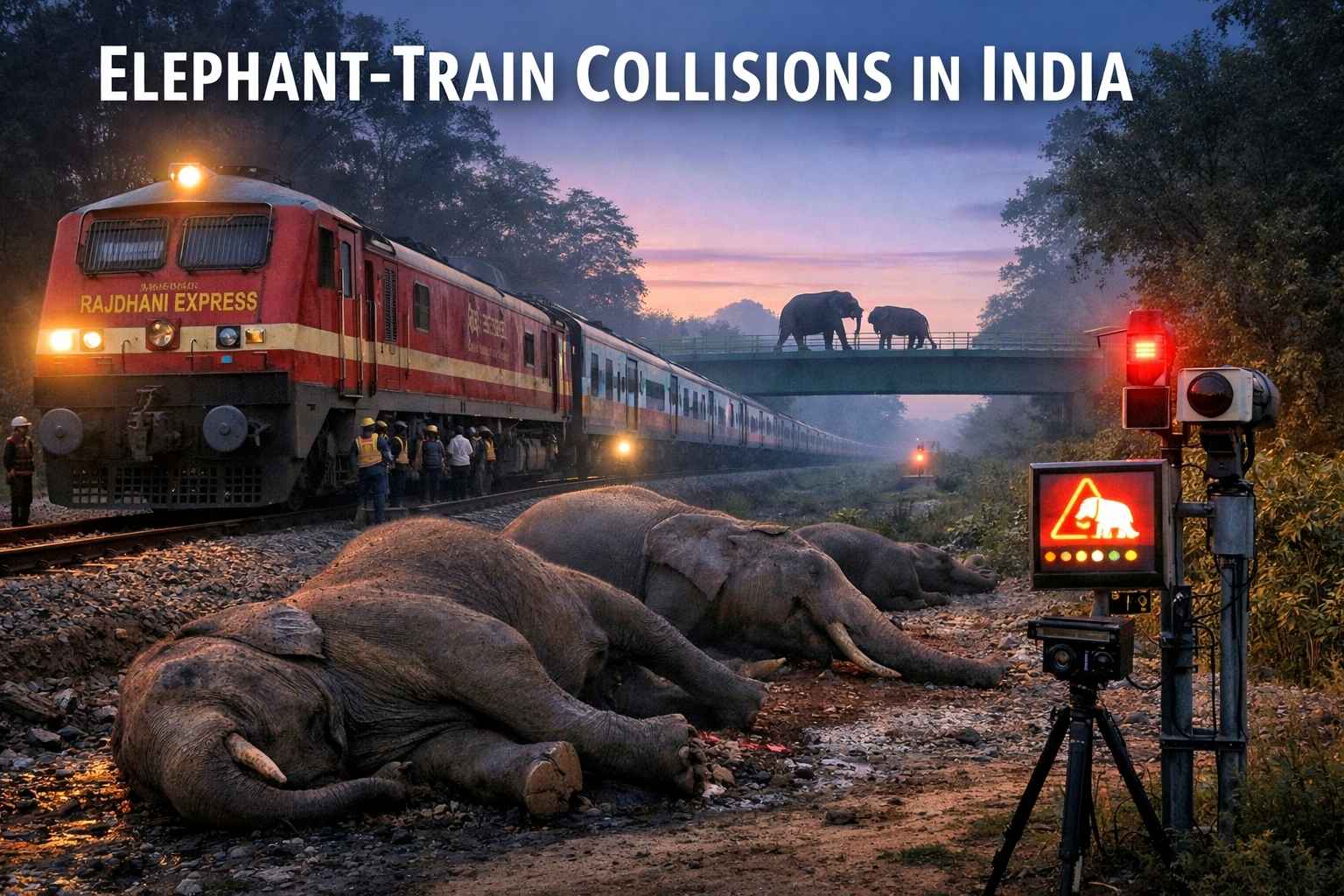Recent reports have exposed serious flaws in India’s real-time environmental monitoring systems, including Delhi’s Air Quality Network and Lucknow’s Noise Monitoring Network.
Background
- India’s cities, especially Delhi, are among the most polluted globally.
- Despite high pollution levels, official data often reports “moderate” air quality due to poor sensor placement and data manipulation.
- Similar credibility issues exist in noise pollution monitoring, especially in Lucknow.
- This raises a critical question: Can environmental policies be effective when their data foundations are weak?

Issues with Air Pollution Monitoring
- Faulty Sensor Placement: Many air-quality sensors are installed under trees, near walls, or in less polluted areas, giving artificially low readings.
- Data Misrepresentation: Air Quality Index (AQI) often reports misleadingly good air, despite visible smog and health complaints.
- Governance Lapses: Political interference and lack of independent oversight compromise scientific credibility.
- Impact: Misleading data delays judicial and administrative actions on pollution control.
Issues with Noise Pollution Monitoring
- Weak Network: The National Ambient Noise Monitoring Network in cities like Lucknow fails to capture real decibel levels.
- Outdated Rules: India still follows Noise Pollution (Regulation and Control) Rules, 2000, which are outdated and below WHO standards.
- Enforcement Gaps: Poor implementation and negligible penalties make compliance weak.
- Rights Impact: Inaccurate noise data undermines citizens’ right to health and life (Articles 19 & 21).
Governance and Accountability Concerns
- CPCB Guidelines exist for calibration and sensor placement, but are poorly enforced.
- There is no independent audit mechanism like in many developed nations.
- Public funds are used to install high-end monitoring systems, but without scientific transparency.
- Weak data affects India’s global commitments under the Paris Agreement and WHO air quality standards.
Health and Environmental Impact
- According to the Air Quality Life Index (AQLI), Delhi residents could live 8.2 years longer if air met WHO standards.
- Nationally, air pollution reduces life expectancy by nearly five years.
- Pollutants like PM2.5 and NO₂ are linked to asthma, reduced lung function, and myopia.
- Faulty data conceals these threats, leaving vulnerable groups—children, elderly, and patients—at greater risk.
Science-Driven Monitoring
- Ensure Sensor Accuracy: Install devices strictly following CPCB standards.
- Independent Oversight: Establish third-party audits and expert review panels.
- Open Data Access: Make real-time, raw data publicly available for scrutiny.
- Citizen Involvement: Encourage community monitoring and transparency mechanisms.
- Policy Integrity: Treat environmental monitoring as a scientific foundation, not a bureaucratic display.
Indian Initiatives for Pollution Detection In Cities
Continuous Ambient Air Quality Monitoring Stations (CAAQMS)
- Nodal Agency: Central Pollution Control Board (CPCB) under the Ministry of Environment, Forest and Climate Change (MoEFCC).
- What it does: Provides real-time air quality data across major Indian cities.
- Pollutants measured:
- Particulate Matter — PM₂.₅, PM₁₀
- Gaseous pollutants — SO₂ (Sulphur Dioxide), NO₂ (Nitrogen Dioxide), CO (Carbon Monoxide), O₃ (Ozone), NH₃ (Ammonia), Pb (Lead) and Benzene, Toluene, Xylene (BTX).
National Clean Air Programme (NCAP)
- Launched: 2019 by MoEFCC.
- Purpose: To reduce PM₂.₅ and PM₁₀ levels by 20–30% by 2024 (baseline 2017).
- How it works: Expands monitoring networks, installs new air sensors, and integrates data from CAAQMS and local bodies.
- Pollutants tracked: PM₂.₅, PM₁₀, NO₂, SO₂, CO, O₃, and Volatile Organic Compounds (VOCs).
SAFAR (System of Air Quality and Weather Forecasting and Research)
- Developed by: Indian Institute of Tropical Meteorology (IITM), Pune — under the Ministry of Earth Sciences.
- Coverage: Major cities such as Delhi, Pune, Ahmedabad, and Mumbai.
- Function: Provides 24-hour air quality forecasts and health advisories.
- Pollutants measured: PM₂.₅, PM₁₀, NO₂, SO₂, CO, O₃, and Black Carbon (BC).
Conclusion
India’s environmental governance must rest on scientific integrity, transparency, and accountability.
Without credible data, real-time monitoring becomes real-time deception, and the true cost is borne by citizens—through disease, shorter lifespans, and loss of trust in institutions.
This topic is available in detail on our main website.





